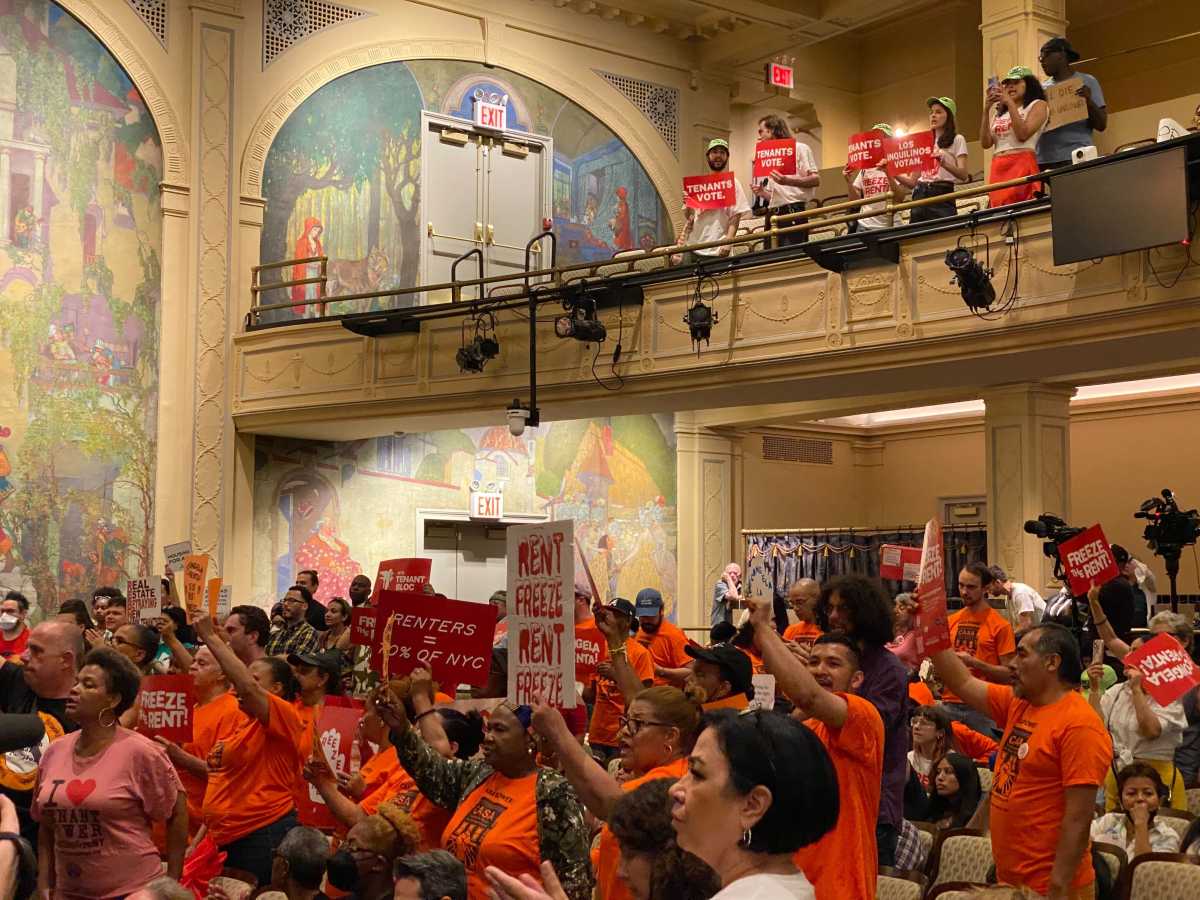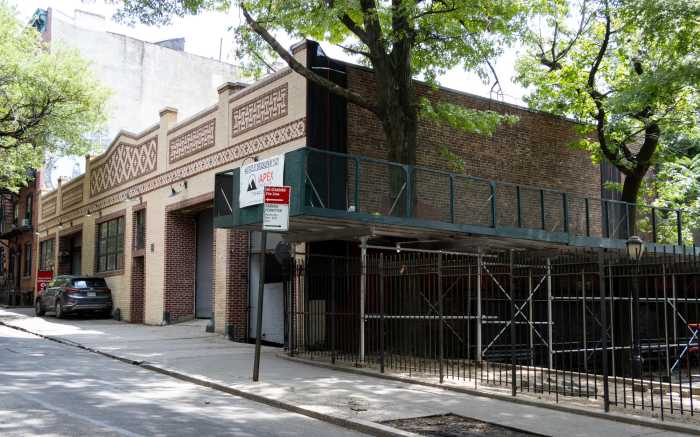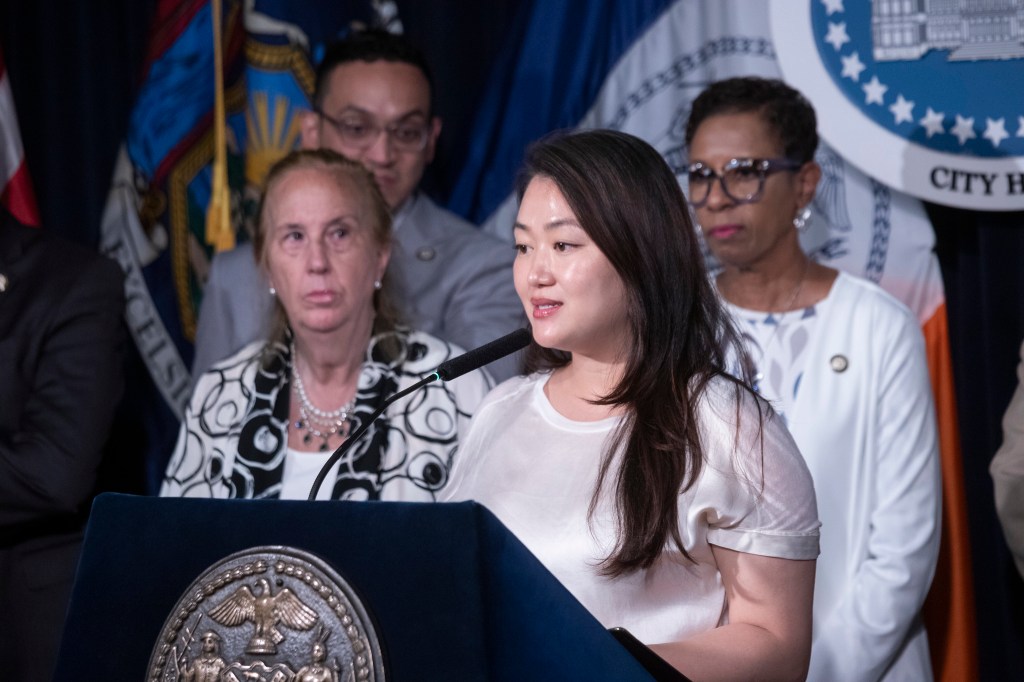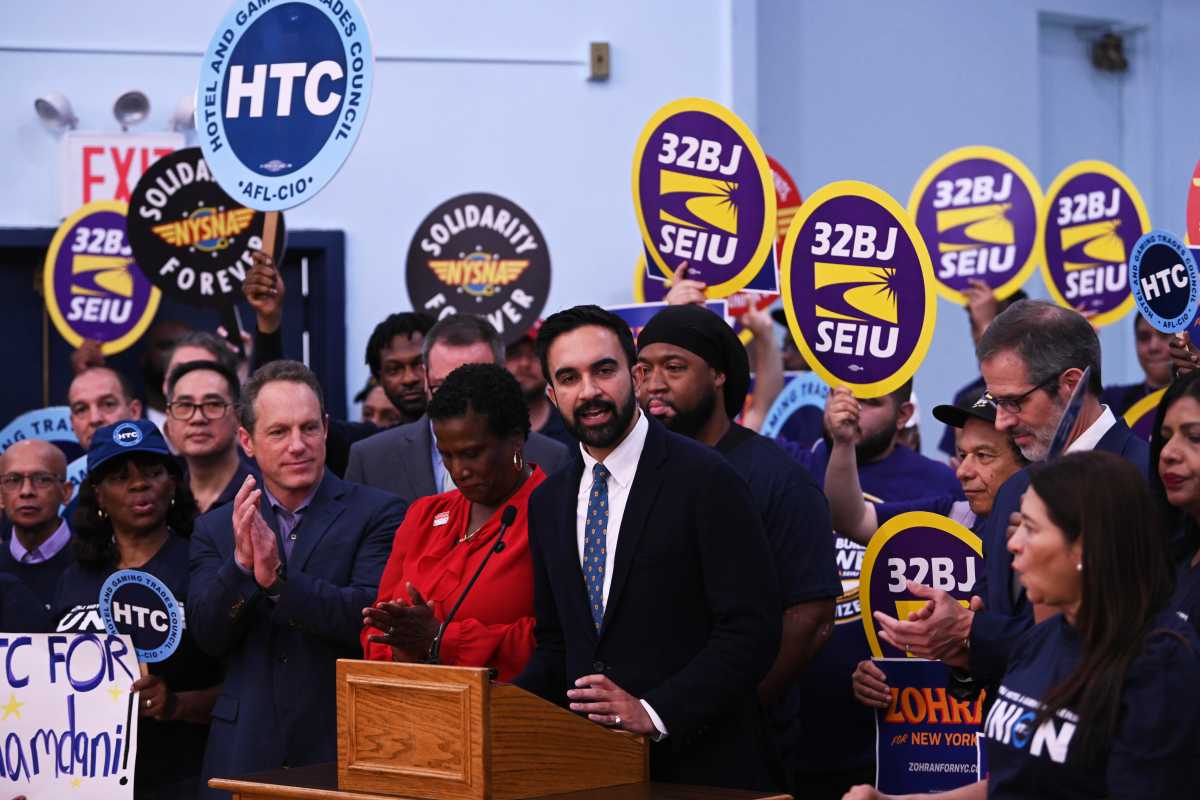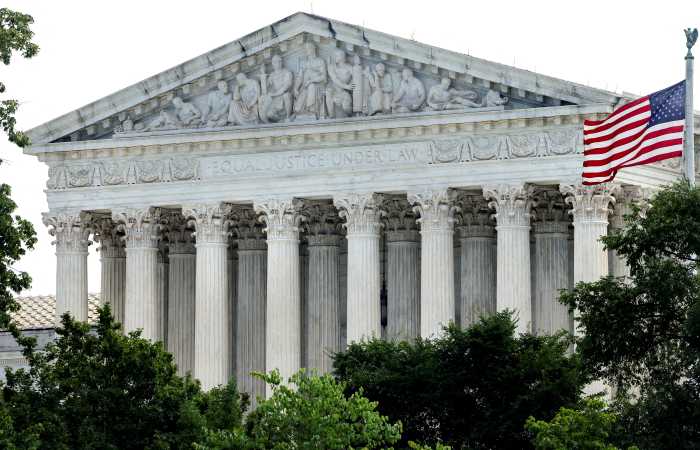A Pratt Institute study released this week revealed that 81.4 percent
of polled residents in the Prospect Heights neighborhood were either “very
concerned” or “concerned” about developer Bruce Ratner’s
proposed Atlantic Yards project.
The study highlighted “very specific things that can be addressed
by development,” according to one of the researchers.
“The neighborhood is not well represented in the process; that is
an indicator to us that there are going to be some problems getting this
through the community,” said Gibb Veconi, founder of the Prospect
Heights Neighborhood Development Council, an umbrella group for a handful
of area neighborhood committees that enlisted the help of researchers
from the Pratt Institute Center for Community and Environmental Development
(PICCED) to fund and complete the study.
“It’s hard to understand because people in the affected area
are largely in support of development, and of the benefits being offered,”
he said. But the neighbors appeared concerned that such issues as public
education, street conditions, and security from crime, were not addressed
by Ratner’s plan.
Ratner’s plan includes 17 high-rise buildings, a 19,000-seat basketball
arena for his New Jersey Nets and soaring office towers as tall as 620
feet on 24 acres of public and private property emanating from the intersection
of Flatbush and Atlantic avenues.
The survey, which polled 400 of the neighborhood’s 20,000 residents,
did not focus on questions about the arena (which itself could hold the
current population of Prospect Heights) but rather quality of life and
other concerns, although it does address the arena plan significantly.
On Wednesday, the PICCED study was released to an audience of more than
100 residents who gathered at PS 9 on Underhill Avenue. A copy had not
yet been made available to Forest City Ratner.
The school auditorium was filled with rapt listeners as Veconi introduced
PICCED Director Brad Lander. A timeline of the Atlantic Yards plan’s
history was read by Roz Parr, a member of the Prospect Heights Association.
Lander told an audience member that the demographic group covered in the
study was a close representation of the community itself, which is made
up of 51 percent black, 28 percent white, 14 percent Hispanic and 4 percent
Asian residents, according to the 2000 Census that was cited in the study.
Lander added that he thought the various economic classes were represented
“across the spectrum,” although the study showed 38 percent
of the respondents earned more than $100,000 per year, and less than 12
percent earned less than $35,000, a drastic reversal of the average area
income, which Bertha Lewis, director of ACORN NY identified as $28,000.
The Corcoran Group estimates the area’s median income at $42,477.
Most respondents (224 of 412) completed the survey online, while the remainder
were solicited to fill out the detailed, 26-question survey in busy areas
of Prospect Heights, or received the study by mail.
About a quarter of the respondents had lived in the community for more
than 10 years.
Major findings in the study showed, according to Veconi, that 74 percent
of the respondents said they were concerned about taxpayer costs for the
Atlantic Yards project, 73 percent were “very concerned” about
the estimated impact of a 10-year construction plan (which has been projected
by Forest City Ratner), and 63 percent said they were “very concerned”
the development would be out of scale with the neighborhood.
Following the presentation by Lander and Veconi, state Sen. Velmanette
Montgomery voiced opposition to the Ratner project, and encouraged the
attendees to envision an alternative development on the site and to involve
themselves in community organizing.
“The information contained in the survey we believe should be very
relevant to any developer, and to any state agent who wants to develop
in Prospect Heights,” said Montgomery.
Councilwoman Letitia James, who also represents Prospect Heights and has
been the most vocal elected official opposing the arena plan, agreed,
but said she would not advocate the project causing community divide.
“I see more and more a top-down review overlooking the people who
will be most affected and impacted by this process,” James said.
“However, I recognize that we need to stay together. It has divided
this community by race, by economic status, by community board, by neighborhood,
and I won’t put up with that.
Veconi disagreed.
“I don’t think it’s divided the community, but perhaps
the developers have tried very hard to do that,” he said.
As people filed out of the meeting, Tyler Cohen, a member of the House
of the Lord Church, in Boerum Hill, handed out flyers advertising a meeting
this Wednesday.
“Rev. Daughtry under attack!” was italicized across either side
of the flyer, which professed to tell “the truth about the $2.1 billion
Atlantic Yard [sic] Development” and stated “clearly our community
will reap enormous benefits from the agreement.”
The Rev. Herbert Daughtry, pastor of the House of the Lord Church, was
brought into the negotiations for a community benefits agreement two weeks
ago. He is one of several clergy who was invited, and the only one who
accepted, to join in the negotiations.
Meanwhile Prospect Heights resident Marc Cohen said a lack of leadership
would be the downfall of any attempt to fight the massive Ratner project.
“I just feel like the community’s not coming together. There’s
too many independent constituents who are doing their own thing. Personally,
I don’t even feel that there’s a strong leadership to confront
the developer,” said the 15-year resident and father of three.


